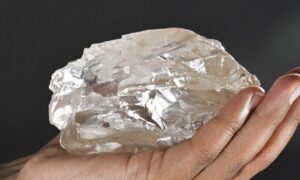No, it is not Photoshopped. The rainbow eucalyptus’s bark really has stripes of vibrant color: reds, blues, greens, pinks, purples, yellows, and browns. This only occurs in this particular species called eucalyptus deglupta, also known as Mindanao gum.

A close-up of the colors of the rainbow eucalyptus’s bark, which look like paint strokes on a canvas. Photo: Chase Clausen/Shutterstock
This type of eucalyptus is the only type to grow in the Northern Hemisphere. You can also find it in the Philippines, New Guinea, Indonesia, and warmer parts of the United States (Hawaii, Texas, California, and Florida). It usually occurs in tropical rainforests, at altitudes below 1,800m. It also needs warm, sunny temperatures of up to 22°C and sandy, loamy soil.
In optimal conditions, it grows up to 76m high and 240cm in diameter. However, its most important and striking feature is the bark. The bark sheds and reveals layers of bright or pastel colors.

Eucalyptus in the U.S. Photo: Danita Delimont/Shutterstock
Color from tannins
David Lee from Florida International University believes that chlorophyll is responsible. He says that when the tree sheds, it exposes the bright green chlorophyll. Shedding is a protective mechanism by which the tree prevents the growth of harmful organisms.
However, exposure of the chlorophyll to air causes a build-up of tannins, which help protect the tree from fungi. These various tannins can be red, yellow, brown, blue, purple, and pink.

Eucalyptus tree buttress with different colors. Photo: Ulchiva/Shutterstock
The rainbow eucalyptus has many uses. Oddly enough, the tree’s pulpwood is a key ingredient in the production of white paper. It also possesses various medicinal properties for treating respiratory illnesses and wounds. Eucalyptus has that distinctive scent commonly used in aromatherapy. However, the rainbow eucalyptus’s scent is not as strong as other varieties around the world.
Because of its otherworldly beauty, it has become a popular ornamental tree. However, one must take care as they grow so fast that they can become an invasive species. At the same time, the tree is under threat. From logging and climate change, its global population has decreased by 30 percent.






